|
KEEP THIS NEWSLETTER ALIVE! Shop Online at https://www.irishnation.com |
||

|

|

|
|
Marvellous Gifts! Family Crest Shields |
Family Crest Rings Signet, Shield and Seal |
Display your Heritage! Family Crest Flags |

=============
IN THIS ISSUE
=============
=== News Snaps from Ireland
=== New Free Resources at the Site
=== Farmleigh House, Dublin
=== The Book of Kells, Trinity College
=== Irish Halloween Traditions
=== The Ghost Story by Pat Watson
=== Bram Stoker: Irish Creator of Dracula
=== YouTube Videos of Irish Interest
=== Monthly Free Competition Result
Popular Articles from recent Newsletters:
The Cliffs of Moher, County Clare
Dermot and Strongbow & the Invasion of Ireland
Natural Museum of Ireland - Archaeology
Ireland's Most Popular Tourist Attractions
==========
FOREWORD
==========
|
I have always blamed Buffy.
It was just one vampire TV series after another and then endless vampire movies and clearly 'Buffy the Vampire Slayer' was to blame. Maybe it is when you reach a certain age that you begin to incorrectly assign all occurrences of a cultural event to one particularly irritating occurrence of it? 
Never-ending Kristen Stewart and Robert Patterson? Buffy caused that! A seemingly good movie takes a detour down a vampire path - Blame Buffy!! A muppet starts counting in Dracula-speak on Sesame Street - BLAME BUFFY!!! Wait a minute - that cant be right. And of course it isn't. I had always known that Bram Stoker was Irish but I had never realized that he grew up less than a mile away from our house on the northside of Dublin, near to Fairview Park. I doubt very much if the Irish creator of one of literature's most famous characters could ever have guessed at the impact his creation would have on so many other art forms. Hundreds of movies and thousands of TV programs later we have arrived at a point where vampires are so 'in' that it is next to impossible to avoid them. For a species that thrives on secrecy they are certainly putting it about lately. I thought the zenith had been reached when Dianne Weist and Jason Patric battled Kiefer Sutherland in 'The Lost Boys' but no. This was only a precursor to the next generation of vampire-annihilators. And no end in sight. Blaming Buffy the Vampire Slayer for it all is just so much easier (for a person of a certain age) but of course the truth will always out in the end. So now you know who to blame for it all - not Buffy, not Sesame Street's 'the Count', not even Rpatz or KStew, but a Victorian-age chap from Dublin named Bram Stoker, the creator of Dracula. HAPPY HALLOWEEN! Michael |

P.S. Please DO FORWARD this Newsletter to a
friend or relative. If you have a website or Facebook
page or Blog (or whatever!) then you can help
us out by putting a link on it to our website:
www.ireland-information.com
Do tell your friends about us as this helps
to keep this newsletter free!
SEND US YOUR PHOTOS OF IRELAND
Got any decent holiday snaps of Ireland - we want them!!
The Information about Ireland Site is compiling a
library of photographs of Ireland and specifically all
of the towns and tourist sites of the country. Photos of
any castle, lake, river, mountain, building, town,
landscape, tourist attraction or historic site are sought.

These photos will be made freely available for anyone
to use in their blogs, school reports, articles,
websites, facebook pages or projects.
Please contact us from here: https://www.irishnation.com/cgi-bin/contactfront.cgi
and we will send you further information. All contributors
will be entered (and re-entered every month) into a monthly
draw for a family crest print for the name of their choosing.
WE NEED YOUR HELP - CONTRIBUTE!
Got something to say? Don't keep it to yourself!
Why don't you submit an article for inclusion
in the next edition? Go here for more information:
https://www.ireland-information.com/newsletter.htm
Do you have access to a website? You can help to
keep this newsletter alive by adding a link to
any of our websites below:
https://www.irishnation.com
http://www.irishsurnames.com
https://www.ireland-information.com
http://www.allfamilycrests.com
http://www.irishpenpals.com
If you have an AOL or HOTMAIL account then you
may get better results by viewing this
newsletter online here:
https://www.ireland-information.com/oct12.htm
The only way that you could have been
subscribed to this newsletter is by filling
out a subscription form at the site whereupon
a confirmation notice would have been issued.
If you wish to unsubscribe then go here:
https://www.ireland-information.com/newsletter.htm
========================
NEWS SNAPS FROM IRELAND
========================
|
IRELAND GIVEN THE RUN-AROUND BY EU OVER DEBT DEAL The ongoing saga regarding the restructuring of Ireland's bank debt has taken a number of major turns. In June the Irish government triumphantly announced that a deal had been brokered whereby some Irish bank debts would in fact be paid for by a new European Union mechanism. A 'game-changer' and 'seismic shift' were some of the terms used at the time. In the months that followed though the realization of exactly what this involves seems to have dawned on the Germans who recently emphatically stated that the new mechanism would only apply to future bailouts (aimed at Spain and Italy in particular). The same German government then made noises to the effect that the EU would continue to 'work closely' with the Irish government on the issue before rolling back even more and conceding that Ireland was a 'special case' and that a deal could still be done. 
This is very dangerous political ground for Enda Kenny's Fine Gael government. Ireland is on schedule to be the first EU country to exit the bailout program and be able to borrow on the strength of it own sovereign credibility in the bond markets. The country has successively met every target imposed by the EU/IMF/ECB troika of creditors that the country has used to keep the lights turned on. On the other hand it is this very success (if that is the right word) that is putting Ireland further down the list of European priorities. With Greece, Portugal, Spain and Italy all in trouble there is simply no motivation for the EU to address a very small peripheral Irish economy that is actually on the road to recovery. It is not as if there are Greek-style street protests or threats of a sovereign default emanating from Ireland to focus EU minds. It remains to be seen whether this 'gently does it' approach from Fine Gael works in securing a new deal for Ireland. If it does not, and if the Germans simply reiterate that only future bank problems can be dealt with by the new EU approach then it will be a bitter blow and not just to Fine Gael and its Labour Party partners but also to an Irish public reeling after four years of austerity. That really would be a 'game-changer'. STATISTICS REVEAL CHANGING FACE OF IRISH RELIGION The Central Statistics Office has released more figures from the 2011 census that has highlighted the changing makeup of religion in Ireland. * The number of agnostics or atheists has increased dramatically and now represents 5.9% of the population * Catholics represent 84.2% of the population, the lowest percentage ever recorded * Muslims account for 1.1% * Non-Christian religions in Ireland account for 1.9% 
Other highlight from the 2011 census include: * There were 42,854 more females than males in the State in April 2011 * Immigration by Irish nationals was 19,593 in the year to April 2011 * Immigration by foreign nationals in the year to April 2011 was 33,674. The largest groups came from Poland, UK, France, Lithuania, Spain and the USA * Total housing stock grew to almost 2 million homes, of these almost 290,000 were vacant on census night giving a vacancy rate of 14.5% * Over half a million (514,068) Irish residents spoke a foreign language. Polish was by far the most common, followed by French, Lithuanian and German IRISH CREATOR OF DRACULA IS REMEMBERED The continuing interest in the Irish writer Bram Stoker is again in evidence with the news that a very rare first edition of his most famous book is expected to sell for close to 10,000 Euros at a London auction. Additionally a new exhibition has been opened in Dublin to celebrate the life of one of Ireland's most neglected writers. IRISH SOCCER TEAM HAMMERED BY GERMANY As if the trouble being experienced by the Irish government with the German government was not enough! The German soccer team hammered Ireland 6-1 at Landsdowne Road to underline the problems facing the Irish team in their quest to qualify for the world cup in Brazil in 2014. 
In a group containing Austria and Sweden as well as the Germans the best that Ireland could realistically hope for was always going to be qualification through a runners-up place. With Sweden drawing 4-4 in Germany the aftermath of the Irish win in the Faroe Islands by 4-1 was occupied with speculation about whether manager Giovanni Trapattoni would be sacked. In the end the FAI have kicked the problem down the road. The manager will stay and try to get us through the group. In reality the Irish soccer association could not afford to sack the experienced Italian, having only recently awarded him a new contract. Defeat to either of Sweden or Austria in the next two games could spell the end of the road though. Voice your opinion on these news issues here: https://www.ireland-information.com/newsletterboard/wwwboard.html |
===============================
NEW FREE RESOURCES AT THE SITE
===============================
IRISH HOLIDAY AND TOURIST FORUM
Post your question about holidaying in Ireland and
we guarantee an answer will be posted on the board:
https://www.ireland-information.com/irishholidays-irishtourist/irishtouristboard.html

NEW COATS OF ARMS ADDED TO THE GALLERY
The following 5 coats of arms images and family
history details have been added to the Gallery:
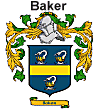
B: Baker, Banahan
C: Cashion
M: Meade
N: Newcomen
View the Gallery here:
http://www.irishsurnames.com/coatsofarms/gm.htm
THE PERFECT WEDDING, ANNIVERSARY OR BIRTHDAY GIFT!
We now have over 100,000 worldwide names available.
Get the Coat of Arms Print, Claddagh Ring,
Screensaver, Watch, T-Shirt Transfer or Clock for
your name at:
https://www.irishnation.com/familycrestgifts.htm
==========================================
IRELAND'S MOST POPULAR TOURIST ATTRACTIONS
==========================================
|
FREE ATTRACTION #5: FARMLEIGH HOUSE, DUBLIN
Farmleigh House is located in the Phoenix Park in Dublin which is one of the largest city parks in the world. The House is located on a 78 acre site and was purchased from the Guinness family by the Irish Government in 1999. It has been extensively refurbished and serves as Government accommodation for visiting dignitaries as well as being open to the public. 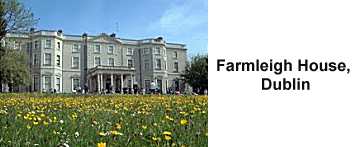
The house was built in the late 1700s and has been expanded over the centuries encompassing a new ballroom, conservatory and library. The grounds have been extensively planted and are well worth a stroll around after taking a tour of the house. There is a nearby boathouse cafe and an active calendar of events held at the House, especially in the Spring and Summer months. Access to the house is by guided tour only (free) so you should check in advance for a suitable time to visit. The grounds of Phoenix Park are wonderful to walk through on a bright day but not so much fun in the rain! Dublin Zoo is located nearby and is a fair walk away. A good schedule for a day out might be to visit Dublin Zoo in the morning and then make your way to Farmleigh House in the afternoon. FEE-PAYING ATTRACTION #5: THE BOOK OF KELLS The Book of Kells is located in Trinity College in the heart of Dublin City Centre. The exhibition that houses the ancient texts also provides for a visit of the old library which is well worth seeing. The exhibit is accessible from either the main gate into Trinity (facing Dame Street) or from the side gate at Nassau Street (access through the 'Arts' Building). The National Gallery, National Museum, Christchurch Cathedral, Dublinia, Grafton Street shopping and St. Stephens Green are all within a few minutes stroll of Trinity College so the location is about as central as you can get! 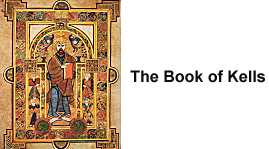
While within the grounds of the College it is well worth taking a stroll around the campus and there are even student-guided walking tours held in the Summer months. The viewing of the Book of Kells and Library can be completed in about an hour (or longer if you prefer!). The actual books contain the four Gospels in Latin and are written on vellum. It is estimated that the books were written about the year 800 A.D. The main chamber of the Old Library is the Long Room and is nearly 65 metres long containing over 200,000 of the Library's oldest books. The Library houses one of the few remaining copies of the Easter 1916 Proclamation of the Irish Republic which was read outside the GPO by Patrick Pearse at the commencement of the rebellion. A visit to the Book of Kells has become almost compulsory for visitors to the city centre. Certainly the book itself is a marvellous artefact. If ancient history intrigues you then the exhibtion is well worth a visit and if not there are plenty of other things to do and see nearby. |
KEEP THIS NEWSLETTER ALIVE!
Solve your gift problem at: https://www.irishnation.com

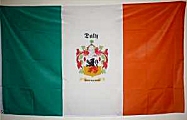
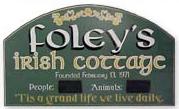
|
========================== IRISH HALLOWEEN TRADITIONS ========================== The Celts celebrated Halloween as Samhain, 'All Hallowtide' - the 'Feast of the Dead', when the dead revisited the mortal world. The celebration marked the end of Summer and the start of the Winter months. During the eighth century the Catholic Church designated the first day of November as 'All Saints Day' ('All Hallows') - a day of commemoration for those Saints that did not have a specific day of remembrance. The night before was known as 'All Hallows Eve' which, over time, became known as Halloween. Here are the most notable Irish Halloween Traditions: Colcannon for Dinner: Boiled Potato, Curly Kale (a cabbage) and raw Onions are provided as the traditional Irish Halloween dinner. Clean coins are wrapped in baking paper and placed in the potato for children to find and keep. 
The Barnbrack Cake: The traditional Halloween cake in Ireland is the barnbrack which is a fruit bread. Each member of the family gets a slice. Great interest is taken in the outcome as there is a piece of rag, a coin and a ring in each cake. If you get the rag then your financial future is doubtful. If you get the coin then you can look forward to a prosperous year. Getting the ring is a sure sign of impending romance or continued happiness. The Ivy Leaf: Each member of the family places a perfect ivy leaf into a cup of water and it is then left undisturbed overnight. If, in the morning, a leaf is still perfect and has not developed any spots then the person who placed the leaf in the cup can be sure of 12 months health until the following Halloween. If not..... The Pumpkin: Carving Pumpkins dates back to the eighteenth century and to an Irish blacksmith named Jack who colluded with the Devil and was denied entry to Heaven. He was condemned to wander the earth but asked the Devil for some light. He was given a burning coal ember which he placed inside a turnip that he had gouged out. Thus, the tradition of Jack O'Lanterns was born - the bearer being the wandering blacksmith - a damned soul. Villagers in Ireland hoped that the lantern in their window would keep the wanderer away. When the Irish emigrated in their millions to America there was not a great supply of turnips so pumpkins were used instead. Halloween Costumes: On Halloween night children would dress up in scary costumes and go house to house. 'Help the Halloween Party' and 'Trick or Treat' were the cries to be heard at each door. This tradition of wearing costumes also dates back to Celtic times. On the special night when the living and the dead were at their closest the Celtic Druids would dress up in elaborate costumes to disguise themselves as spirits and devils in case they encountered other devils and spirits during the night. By disguising they hoped that they would be able to avoid being carried away at the end of the night. This explains why witches, goblins and ghosts remain the most popular choices for the costumes. 
Snap Apple: After the visits to the neighbours the Halloween games begin, the most popular of which is Snap Apple. An apple is suspended from a string and children are blindfolded. The first child to get a decent bite of the apple gets to keep their prize. The same game can be played by placing apples in a basin of water and trying to get a grip on the apple without too much mess! The Bonfire: The Halloween bonfire is a tradition to encourage dreams of who your future husband or wife is going to be. The idea was to drop a cutting of your hair into the burning embers and then dream of you future loved one. Halloween was one of the Celt 'fire' celebrations. 
Blind Date: Blindfolded local girls would go out into the fields and pull up the first cabbage they could find. If their cabbage had a substantial amount of earth attached to the roots then their future loved one would have money. Eating the cabbage would reveal the nature of their future husband - bitter or sweet! Another way of finding your future spouse is to peel an apple in one go. If done successfully the single apple peel could be dropped on the floor to reveal the initials of the future-intended. Anti-Fairy Measures: Fairies and goblins try to collect as many souls as they can at Halloween but if they met a person who threw the dust from under their feet at the Fairy then they would be obliged to release any souls that they held captive. Holy water was sometimes anointed on farm animals to keep them safe during the night. If the animals were showing signs of ill health on All Hallows Eve then they would be spat on to try to ward off any evil spirits. Happy Halloween from Ireland! |
KEEP THIS NEWSLETTER ALIVE!
Get Your Family Crest Signet Ring at:

|
============================ 'THE GHOST STORY' by Pat Watson ============================ It was a frosty night in January in the year of Our Lord nineteen hundred and nine. Bill was the church caretaker in this half parish. The priest only rode his horse out here on Sunday to read Mass or for funerals. This was one such day as this evening the remains of old Granny Smith had come to the chapel. Coffins were left in the back of the chapel overnight. He had locked the church earlier at ten and had only come out to look at the cows before going to bed. It was just after midnight. Was that a noise he heard in the church? 
It couldn't possibly be as he had barred the double doors on the inside before exiting through the sacristy door, which he locked with the key. Why he still had it in his pocket. Just the same, it was only twenty yards to the double doors, he would have a look. Halfway there he felt a bit eerie so he called out. 'Is there anyone there?' The only reply he got was a creaking door. As he moved into the shadow he could see that one of the double doors was half open. What the hell? He stopped in his tracks. He peeped in the door, he could not see, he pushed in the door a bit farther. He looked over to where the coffin was left on trestles. Good God! The old woman was sitting up in the coffin. He could see her by the moonlight that came through the stained glass windows. He could feel his hair stand on end. She had her head on the end of the coffin with her two arms hanging over the sides. The lid of the coffin was standing up against a pillar. 'Did that lid move?' He thought it did. 'Don't be daft he told himself, coffin lids don't move on their own accord. There, it moved again, it had feet, little bare feet.' He looked back to the coffin. It had legs, two bare legs. Had the old woman put her legs down through the bottom of the coffin? The legs had a white shroud dangling to the knees. Bill was rooted to the spot. Sheer terror froze him. Then a white cowl appeared over the edge of the coffin. He felt its eyes peering. 
A great unearthly shriek emanated from the cowl. It sounded like r-u-n-f-o-r y-o-u-r l-i-f-e. So screaming, the white ghost emerged from behind the coffin and headed straight for Bill at the open door. A black ghost who came from behind the lid chased him. Bill collapsed into the back seat just in time to avoid been trampled on by the screaming ghosts. They went through the opening like bats out of hell. Had he really collapsed? Or did they run through him? He just didn't know any more. He was glad that the shrieks were receding into the distance. He hoped he had seen the last of them. His hair was still on end. It had probably turned white. A few people who lived near the road thought they heard screaming, but they could not be sure. Some thought they dreamt it. Not so John and Stephen who were coming home with a good few pints on them. They saw the ghosts all right. They passed them on the road at great speed. Their shrieks had subsided by then. They disappeared after crossing the dragon stream, near old Granny Smith's house. (John spent the rest of his life, which wasn't very long, mumbling in a drunken haze. Stephen on the other hand took the pledge the very next day and never drank again for the remaining thirty years of his life. Indeed, it was rumoured that he confided to his good wife that he saw the devil chasing his soul across the dragon stream and that he promised God that if he gave him another chance, he would never drink again.) Meanwhile back at the church, Bill sat in a trauma trance, silently invoking God, His Blessed Mother and every saint in creation. Eventually, his heart slipped back out of his mouth and began to beat normally, his hair lay down again and the sweat all over his body began to cool. Some of his reason returned. The small stipend he received as church caretaker made the difference between him being a poor small farmer and a very poor small farmer. His 'gossans' were serving Mass and doing well at school. He might even make a priest out of one of them yet. That would give him real stature in the parish. Fear or no fear, he had to keep his job and that meant keeping the church locked and corpses in their coffins. He got up, his knees were shaking, his hands were shaking, yet he closed the double oak doors, the handles of which were u-shaped made to line up with similar u-shapes on the frames when the doors were closed. Into those slots he dropped the six by three polished oak plank that was made for the purpose. This made the whole thing rock solid. Hopefully it would keep out the ghosts if they returned. He then went to the coffin, put back the arm on the right, walked round, put back the other arm, then down to the foot where he caught the two ankles and pulled the old woman back into the coffin. Her head bounced off the bottom with a thud, no lining in the coffins of the poor, not even a fist full of sawdust. He then rearranged her habit just for decency. He peered behind the lid, just in case, then picked it up and put it on the coffin. The wooden dowels for holding it on were under the trestles; he put them in position, pulled off one boot to tap them home. He replaced the boot, now for the walk up the full length of the church to the sacristy. He could not look both sides at once and ghosts might emerge from the shadows of the seats at any time. The red sanctuary lamp looked down, its dull light mingling with the dim moonlight making the whole scene eerie, unreal, ghostly even. He could hear his own breathing, his heart was pounding again, the sound of his own footsteps unnerved him, but finally he reached the sacristy. He rushed in, unlocked the outer door, dashed out and locked the door behind him. He had done his duty. He would keep his job. Nobody would ever know what happened here. Having broken the ice on the barrel under the eve, he washed death from his hands, wiped them in his trousers and tiptoed back into his house. Everybody was still asleep. He had not been missed. As he crept into bed beside his sleeping wife his courage and reason returned. Why had the ghosts left the dowels under the trestles? Had they intended to replace the lid? If so, why? Why were they so small? Perhaps they were not ghosts at all. The Granny had only been rescued from the poor house because of the new five-shilling old age pension. By the time they had brought her home ten miles on the ass's cart she had the rattles in her throat. She died the next day. One five-shilling pension was all they got. It wouldn't half pay for the drink at the wake. And another thing! He had heard that the she was laid out on a linen sheet on the kitchen table. No one belonging to them ever owned a linen sheet, no, nor even a flour bag sheet. That's where unrestrained young love led to, poverty and want. Where would they have got the sheet? Where! Only on loan from their cousin who worked in the big house? It would have to be returned even if through drink or pride the undertaker was allowed to put it in the coffin with the old woman. If two grandchildren hid in the church wrapped in granny's black shawl they could remove the sheet when everyone was in bed. If they were disturbed in their weird work, might they not have wrapped themselves in the sheet and the shawl and run screaming from the scene? Had he solved the puzzle? He would confront the children after the funeral tomorrow and confirm his suspicions. Until he had talked to the children he would not mention any of this to a soul. He had a long wait. He would never be sure. The children weren't at the funeral, sick, someone said. He supposed they got cold in the church, he would see them at Mass on Sunday. They didn't come, still sick? He never saw them again. Consumption took them with the blooming of the daffodils, only twelve hours apart. They were buried together beside the Granny. 'Maybe it was ghosts that night after all. Maybe it was the children. Maybe, just maybe they should have let the dead rest? Maybe just maybe we should do the same?' May they all stay resting in peace! 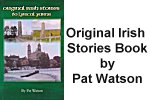
'The Ghost Story' is one of sixty lyrical yarns from 'Original Irish Stories' by Pat Watson, Creagh, Bealnamulla, Athlone, Ireland. First published in May 2006. Visit: http://www.myirishstories.com or you can email the author here: pjwatson@utvinternet.com |
KEEP THIS NEWSLETTER ALIVE!

Get Your Family Crest Flag at:
https://www.irishnation.com/familycrestflags.htm
|
========================================= BRAM STOKER - THE IRISH CREATOR OF DRACULA ========================================= Until quite recently it was a little know fact that the creator of perhaps the worlds most famous villain was an Irishman from Clontarf in Dublin. Bram Stoker was born in 1847 to Dubliner Abraham Stoker and Donegal native Charlotte Mathilda Blake Thornley. The third of seven children the young Bram Stoker was bed-ridden for much of his first seven years, a period that gave him much opportunity for reflection and creative thought: 'I was naturally thoughtful, and the leisure of long illness gave opportunity for many thoughts which were fruitful according to their kind in later years.' He recovered from his ill-health and went on to excel as an athlete at Trinity College from where he graduated with honours in the field of Mathematics in the year 1870. As president of the University Philosophical Society his first paper was on 'Sensationalism in Fiction and Society'. He became the Theatre critic for the Dublin newspaper 'The Evening Mail', which was co-owned by the author of many Gothic tales, Joseph Sheridan Le Fanu, and who was the leading ghost-story writer of the nineteenth century. 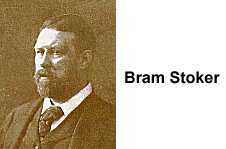
In 1878 he married Dubliner Florence Balcombe who had previously been courted by Oscar Wilde. Stoker knew Oscar Wilde from his College days and even visited Wilde on the continent after his exile. The family moved to London where Stoker became manager of the Lyceum Theatre, a position he held for 27 years. The Theatre was most associated with Henry Irving who was a famed actor of the classical variety. Stoker was very active in the literary and artistic community in London at the time, meeting with the likes of Sir Arthur Conan Doyle, to whom he was distantly related. But it was to Irving that Stoker was devoted and it is thought that it is upon this man that he based his most famous literary creation - that of Count Dracula. Stoker travelled the world with the now internationally famous acting company and even attended the White House with Irving, meeting Presidents William McKinley and Theodore Roosevelt, such was his employers fame. His experience as a newspaper writer stood him in good stead when he began his work on Dracula. Stoker was already a published writer when he began researching ancient stories about vampires. The style of the book is very much in keeping with his previous experience as a news reporter with diary entries, newspaper clippings and telegrams all adding to a sense of realism. The fact that there were so many contributors within the story added to the sense of reality. Stoker is also said to have been inspired in part by a visit to St. Michan's Church in Dublin, the vaults of which contain many mummified remains. 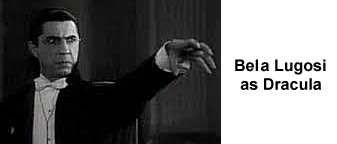
It was thought that the original 541 page Dracula manuscript from 1897 was lost forever but like the subject of the novel it too had to make an epic journey. From Transylvania to Pennsylvania, the US State that is home to many a desperado in hideaways like Allenport, Seneca and Doylestown, the manuscript remained hidden for decades before being amazingly uncovered in a barn there in the early 1980's. The original title of the novel 'The Un-Dead' was clearly marked on it. It was later bought by the co-founder of Microsoft, Paul Allen. Bram Stoker died in London in 1912. While well regarded as a ghost-writer in the Victorian age it was not until the first cinematic production of a vampire in 1922 that his legacy was set forever. Stoker's widow actually sued the German film-makers who produced Nosferatu, the first vampire movie with 'Count Orlock' being substituted for 'Count Dracula' in an attempt to breach the copyright. She won the case in 1925. The first authorized version of the story was released in 1931 with Bella Lugois as Count Dracula. Newspapers reported that members of the audiences fainted in shock at the horror on screen! The film became a box office sensation and is regarded as the first full length horror movie. It is estimated that there have been at least 200 movies featuring Dracula while a vampire subculture has blossomed among young people in particular, fuelled by countless television and silver screen productions. It is only in recent years that a fuller appreciation of the work and impact of Bram Stoker has occurred in Ireland and beyond. Dracula Audio-Book: http://www.gutenberg.org/ebooks/6534 Dracula Full Text: https://www.ireland-information.com/irishliterature.htm Mercury Theatre 1938 Radio Recording of Dracula with Orson Welles: http://sounds.mercurytheatre.info/mercury/380711.mp3 |
KEEP THIS NEWSLETTER ALIVE! Visit https://www.irishnation.com
==============================
YOUTUBE VIDEOS OF IRISH INTEREST
==============================
You can view our archive of Videos of Irish interest here:
https://www.ireland-information.com/irishvideos.htm

Farmleigh House, Dublin
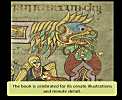
The Book of Kells, Trinity College, Dublin
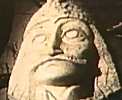
Dracula Documentary
==================
COMPETITION RESULT
==================
The winner was: gwenccannon@gmail.com
who will receive the following:
A Single Family Crest Print
(US$19.99 value)

Send us an email to claim your print, and well done!
Remember that all subscribers to this
newsletter are automatically entered into the
competition every time.
I hope that you have enjoyed this issue.
Until next month,

Michael Green,
Editor,
The Information about Ireland Site.
https://www.ireland-information.com
Click here to contact us
KEEP THIS NEWSLETTER ALIVE! Visit https://www.irishnation.com